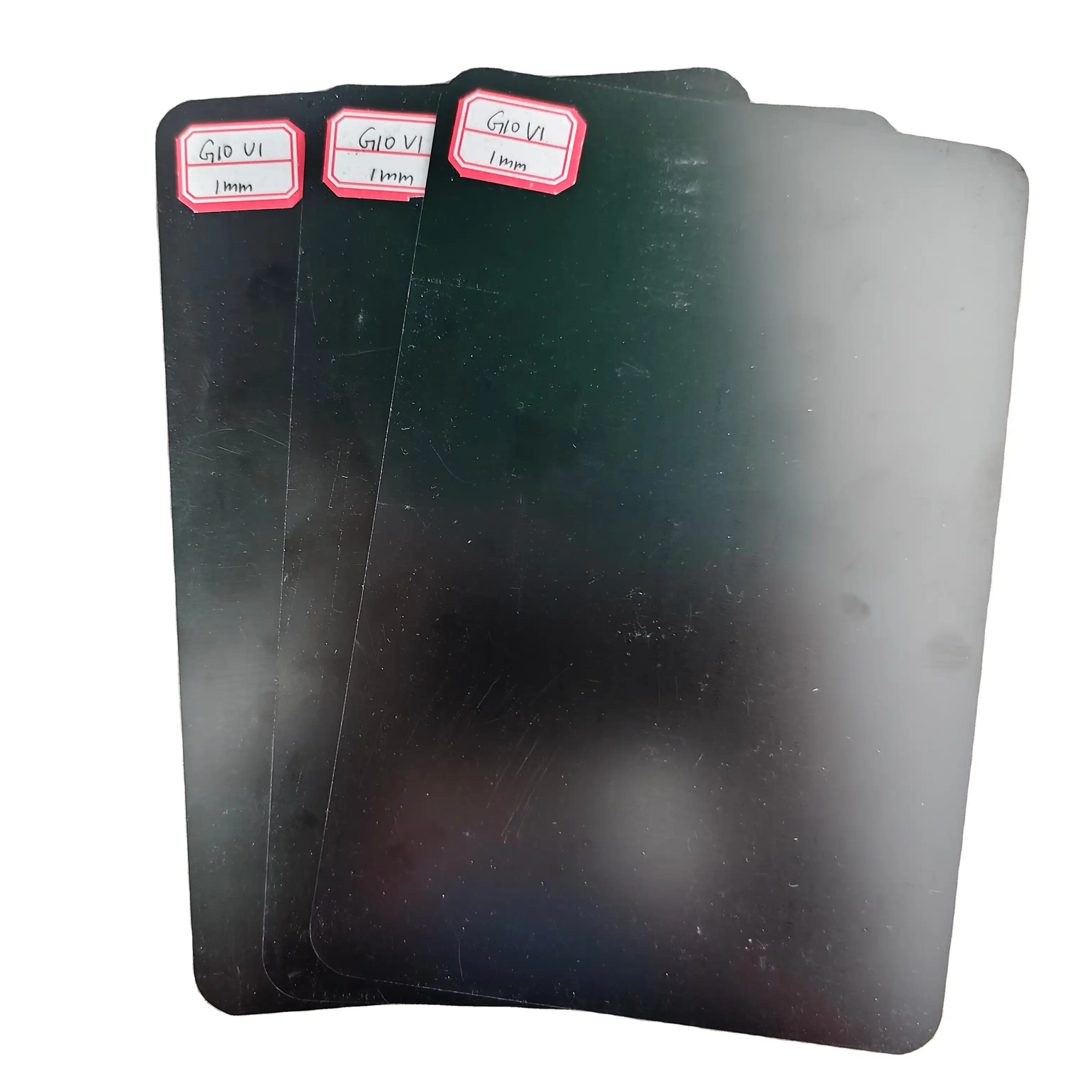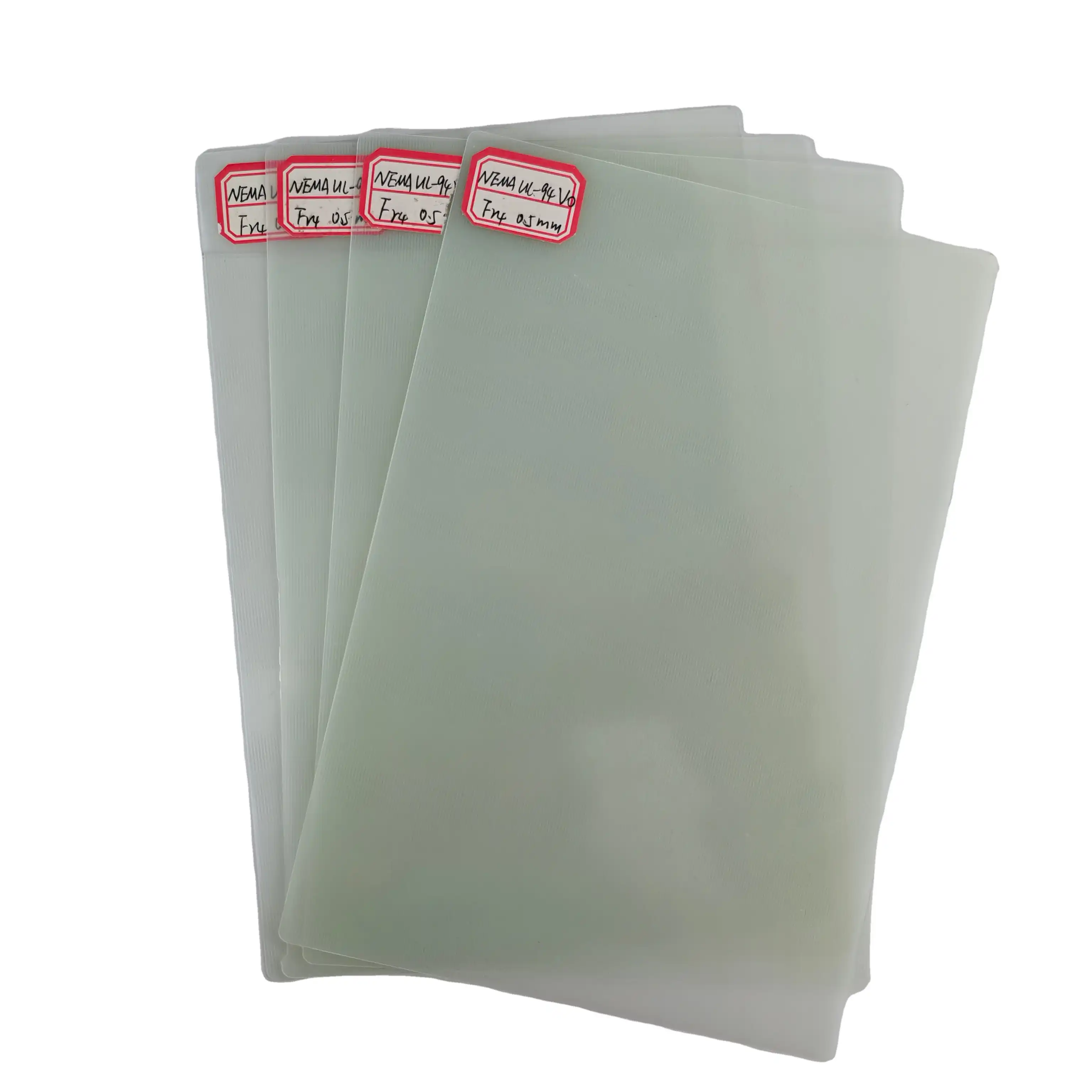G10/FR4 Material Properties
When it comes to selecting the right insulating sheet for your manufacturing needs, understanding the nuances of materials like G10 and FR4 is paramount. These two laminates, renowned for their durability and versatility, are staples in industries ranging from electronics to aerospace. Both G10 and FR4 are composite materials made from woven fiberglass cloth impregnated with epoxy resin, yet they possess distinct characteristics that make them suitable for specific applications. G10 is prized for its mechanical strength, while FR4 excels in flame resistance. This blog delves into the intricate properties of these materials, helping you make informed decisions for your projects. Let's explore what sets G10 and FR4 apart and why they matter.

Unveiling the Core Characteristics of G10 and FR4
Composition and Structural Integrity
At their essence, G10 and FR4 are engineered from a matrix of fiberglass cloth saturated with epoxy resin, cured under high pressure and temperature to form rigid, robust sheets. This construction endows both materials with exceptional tensile strength and dimensional stability, making them resistant to warping or deformation under stress. G10, in particular, is lauded for its mechanical fortitude, often employed in applications requiring unyielding structural support. FR4, while structurally similar, incorporates flame-retardant additives, enhancing its suitability for environments where fire safety is non-negotiable. The synergy of fiberglass and epoxy in both materials ensures they withstand harsh conditions, from corrosive chemicals to extreme temperatures, without compromising integrity.
Electrical Insulation Capabilities
One of the standout attributes of G10 and FR4 is their prowess as electrical insulators. Both materials exhibit high dielectric strength, meaning they can endure significant voltage without conducting electricity. This makes them indispensable in the production of circuit boards, terminal boards, and other components where electrical isolation is critical. G10 shines in applications demanding superior insulation under humid or wet conditions, thanks to its low moisture absorption. FR4, with its flame-retardant properties, is the go-to choice for electronic assemblies where safety standards mandate resistance to ignition. Their ability to maintain insulation performance over time, even in challenging environments, underscores their value in high-stakes industries.
Thermal and Chemical Resilience
Beyond mechanical and electrical properties, G10 and FR4 demonstrate remarkable resilience to thermal and chemical stressors. Both materials can operate effectively across a broad temperature spectrum, typically from sub-zero conditions to upwards of 130°C, without losing structural integrity. G10 is particularly adept at resisting chemical degradation, making it a preferred material in environments exposed to acids, alkalis, and solvents. FR4, while equally durable, prioritizes thermal stability, ensuring it remains uncompromised in applications where heat dissipation is a concern. This duality of resilience ensures that both materials cater to a wide array of industrial demands, from chemical processing plants to high-temperature electronic systems.
Applications That Showcase G10 and FR4 Excellence
Precision in Electronics Manufacturing
The electronics sector is perhaps the most prolific user of G10 and FR4, particularly in the realm of printed circuit boards (PCBs). FR4, with its flame-retardant nature, is the backbone of most PCB designs, providing a stable, non-conductive substrate that supports intricate circuitry. Its ability to resist thermal expansion ensures that delicate solder joints remain intact, even under fluctuating temperatures. G10, while less common in PCBs due to its lack of flame resistance, finds its niche in applications requiring exceptional mechanical strength, such as insulating washers or spacers. The precision and reliability of these materials make them indispensable in creating compact, efficient, and safe electronic devices.
Structural Components in Aerospace and Automotive
Beyond electronics, G10 and FR4 play pivotal roles in industries where weight, strength, and durability are paramount. In aerospace, G10 is often utilized in structural components, such as mounting plates and brackets, where its lightweight yet robust nature reduces overall aircraft weight without sacrificing performance. FR4, with its fire-resistant properties, is favored in automotive applications, particularly in electrical harnesses and battery enclosures, where safety is a critical concern. The ability of both materials to endure vibrational stress and thermal cycling makes them ideal for high-performance vehicles and aircraft, ensuring longevity and reliability in demanding conditions.
Industrial Machinery and Equipment
In the realm of industrial machinery, G10 and FR4 are unsung heroes, providing insulation and structural support in equipment exposed to rigorous operational environments. G10's resistance to wear and abrasion makes it a prime candidate for gears, bushings, and wear strips in heavy machinery. FR4, on the other hand, is often employed in control panels and switchgear, where its flame-retardant properties mitigate the risk of fire hazards. The versatility of these materials allows manufacturers to design equipment that is not only efficient but also safe and durable, reducing maintenance costs and downtime in industrial settings.
Choosing Between G10 and FR4 for Your Needs
Assessing Environmental Demands
Selecting between G10 and FR4 hinges on the specific environmental conditions your application will encounter. If your project involves exposure to moisture, chemicals, or extreme mechanical stress, G10's superior resistance to these factors makes it the optimal choice. Its low water absorption and chemical inertness ensure longevity in harsh settings, such as marine or chemical processing environments. Conversely, if fire safety is a priority, FR4's flame-retardant properties make it indispensable, particularly in applications governed by stringent safety regulations, such as electronics or automotive manufacturing. Understanding the environmental demands of your project is key to leveraging the strengths of either material.
Balancing Cost and Performance
While both G10 and FR4 offer exceptional performance, cost considerations often play a decisive role in material selection. G10, due to its specialized mechanical properties, can be slightly more expensive, particularly in applications requiring custom fabrication or high-volume production. FR4, being more standardized in electronics manufacturing, often presents a more cost-effective option, especially for large-scale projects. However, the long-term benefits of choosing the right material - such as reduced maintenance, enhanced safety, and extended service life - often outweigh initial cost differences. Evaluating the performance requirements against budget constraints ensures you select a material that delivers optimal value.

Customization and Fabrication Flexibility
Another critical factor in choosing between G10 and FR4 is the ease of customization and fabrication. Both materials can be machined, cut, and shaped to precise specifications, but their properties influence their suitability for specific fabrication techniques. G10's mechanical strength makes it ideal for applications requiring intricate machining or tight tolerances, such as precision components in aerospace. FR4, with its standardized properties, is often preferred in applications where uniformity and repeatability are essential, such as mass-produced circuit boards. The ability to tailor these materials to your exact specifications ensures they meet the unique demands of your manufacturing processes.
Conclusion
Navigating the world of insulating sheets can be complex, but understanding the properties of G10 and FR4 simplifies the decision-making process. G10 excels in mechanical strength and chemical resistance, making it ideal for demanding structural applications, while FR4's flame-retardant nature positions it as the material of choice for safety-critical electronic systems. By assessing environmental conditions, balancing cost and performance, and considering fabrication needs, you can select the material that best aligns with your project goals. These laminates, with their proven track record, continue to empower industries worldwide with reliability and innovation.
Contact Us
Ready to explore how G10 and FR4 can elevate your manufacturing projects? With over 20 years of expertise in producing insulating sheets and a decade of global trade experience, we're here to help. Contact us at info@jhd-material.com for more information or to request a consultation.
| Product name | Temperature resistance | Flame retardant grade |
| G10 | 135℃ | UL94-V1 |
| FR4 | 125℃ | UL94-V0 |
References
"Composite Materials: Engineering and Science" - Matthews, F.L., Rawlings, R.D.
"Electrical Insulation Materials: Properties and Applications" - Brown, M.
"High-Performance Composites: Design and Manufacturing" - Harris, B.
"Flame-Retardant Polymer Composites" - Nelson, G.L.
"Advanced Materials in Aerospace Engineering" - Smith, J.P.
"Industrial Applications of Epoxy Composites" - Carter, R.T.

Get a complete product list and quotation

J&Q New Composite Materials Company



